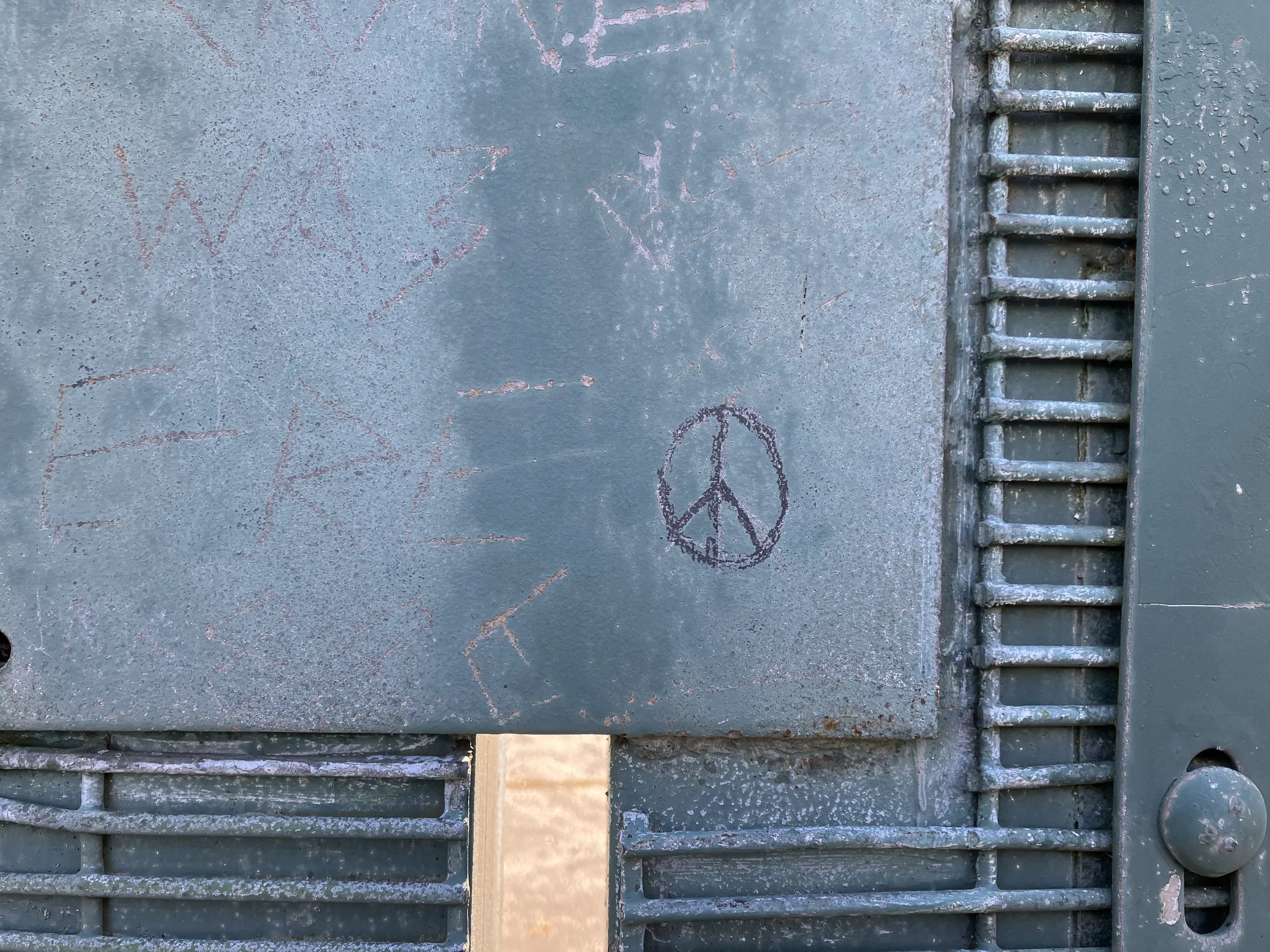Greenham Common
Women’s Peace Camp
In Reference to What It Means.
In 1979, the decision was taken to use RAF Greenham Common in Berkshire, England to house American ground-launched nuclear missiles. Two years later, with nuclear war looking so likely that every household had received ‘Protect and Survive’ leaflets, a group of women and children marched from Cardiff to Greenham Common, using walking as a peaceful and natural form of political protest.
As the newspapers at the time were disinterested in covering the story, the women felt they had to set up a peace camp at the base to draw attention to the worsening nuclear situation. One night turned to weeks, then to months and years.
The women linked hands and used song, graphics, banners and posters as non-violent protests to grab the world’s attention. Tens of thousands of women eventually took part. As numbers grew, more camps were set up at each of the base’s gates.
The Ministry of Defence called for an increased police presence at the base, who were petty, cruel and violent to the women. Hundreds of women were arrested and sent to prison.
The last missiles left the site in 1991, after a treaty between the Soviet Union and the USA. Would the politicians have ever met without the Greenham Common Women’s Peace Camp ensuring there was increased pressure and attention on the issue? Would any politican have admitted that a movement of women had made world leaders see sense?
Today
The RAF base was abandoned in 1992, finally being opened to the public in 2000 as an open heath full of wildlife. Only a small patch of runway remains, but the long-empty missile silos are still there, inaccessible to the general public, protected by layers of military fencing.
The image below of the CND symbol is from a recent trip to Greenham Common. Many of the women at the Peace Camp initially found out about the protest through being members of local CND groups.
The symbol is scratched into one of the locked silo gates, a reminder of the women who lived on the site, and the guarded nature of it all. The symbol, easily missed, set quietly against the sounds of people enjoying themselves, is pretty moving.
Please also see David Gentleman’s ‘A Special Relationship’.
The CND symbol, designed by Gerald Holtom.



